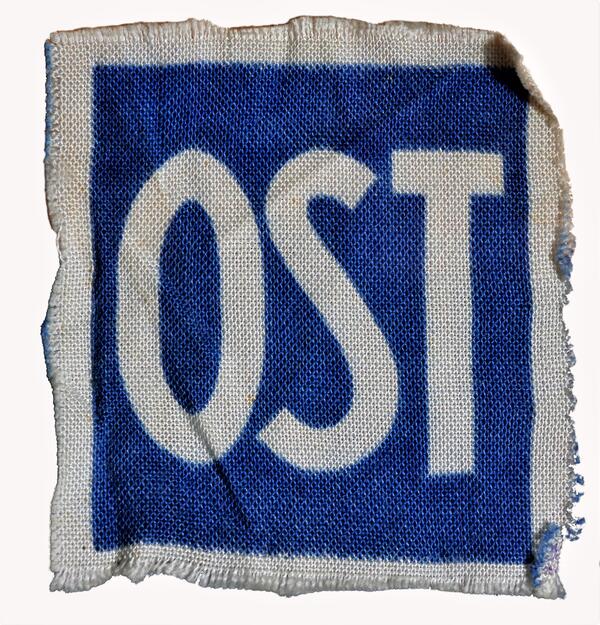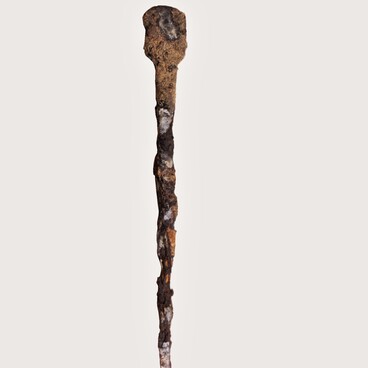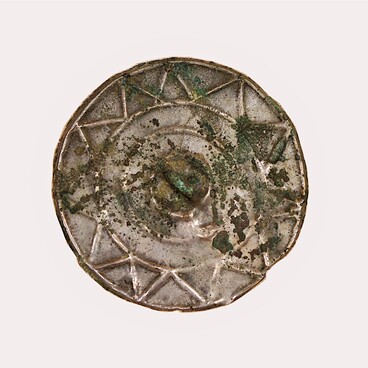A badge with the letters “OST” was a designation mark for Ostarbeiters — citizens of Eastern European countries, who were brought by force to Germany as a free work force. It was obligatory to wear the badge on the clothes. Next to the badge, there was another mark to identify the nationality of the prisoner. For example, for the Russians, it was a red oval with a blue cross inside. Both exhibits are displayed in the collection of the Shebekino History and Art Museum.
In Germany, the Ostarbeiters lived in labor camps surrounded by barbed wire. These places were owned either by large industrial companies or the state. From the state camps, the eastern workers were conveyed to small enterprises and neighboring farms. The working day lasted 12 hours and the working week was up six days.
In order to cut down transportation costs, the Ostarbeiters, who were sent to outlying farms, most often stayed there. The workers were usually lodged in a shelter built for the cattle, and in most cases, both work and living conditions were much harder than in industrial enterprises.
The freedom of movement was limited for Ostarbeiters: they were unable to go where they wanted or to choose where to live. They could be abused, beaten, and even killed, as the German citizens were not seriously punished for that. Those, who tried to escape from the camp or leave their workplace, were publicly executed, and their bodies were placed in public view.
Nearly five million civilians were sent to work in Germany. After the war, almost 2.5 million people returned to the USSR that made up practically one half. About half a million people failed to endure the severe working conditions, hunger, cold, and violence or were simply killed. About one million Soviet citizens were killed in airstrikes and raids on German factories and plants, and the additional 700,000 people refused to return to the USSR. Today there is a foundation in Germany called “Remembrance, Responsibility, and Future”, which compensates former eastern workers.
In Germany, the Ostarbeiters lived in labor camps surrounded by barbed wire. These places were owned either by large industrial companies or the state. From the state camps, the eastern workers were conveyed to small enterprises and neighboring farms. The working day lasted 12 hours and the working week was up six days.
In order to cut down transportation costs, the Ostarbeiters, who were sent to outlying farms, most often stayed there. The workers were usually lodged in a shelter built for the cattle, and in most cases, both work and living conditions were much harder than in industrial enterprises.
The freedom of movement was limited for Ostarbeiters: they were unable to go where they wanted or to choose where to live. They could be abused, beaten, and even killed, as the German citizens were not seriously punished for that. Those, who tried to escape from the camp or leave their workplace, were publicly executed, and their bodies were placed in public view.
Nearly five million civilians were sent to work in Germany. After the war, almost 2.5 million people returned to the USSR that made up practically one half. About half a million people failed to endure the severe working conditions, hunger, cold, and violence or were simply killed. About one million Soviet citizens were killed in airstrikes and raids on German factories and plants, and the additional 700,000 people refused to return to the USSR. Today there is a foundation in Germany called “Remembrance, Responsibility, and Future”, which compensates former eastern workers.
The Shebekino Museum collection houses dresses, badges, documents, and photographs of former Ostarbeiters, as well as lists of local residents who were deported to work in Germany.



